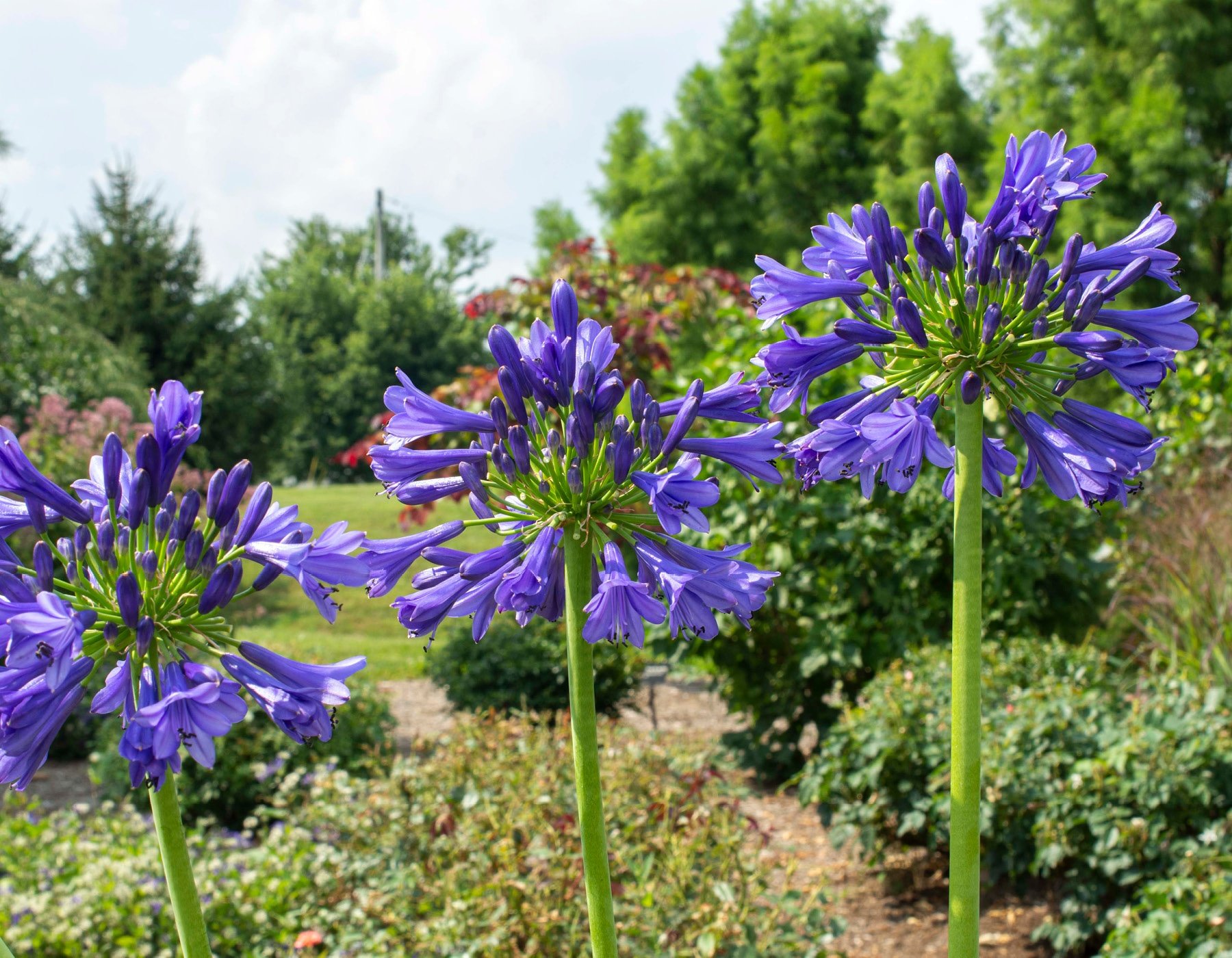Understanding the Art of Agapanthus Care: Essential Steps for Healthy And Balanced Development and Vivid Flowers
In the realm of gardening, the farming of agapanthus stands as a satisfying endeavor for those who look for to nurture these classy blooming plants. From selecting the right range to understanding pruning techniques, the journey in the direction of cultivating growing agapanthus plants is complex and holds the essential to unlocking the complete potential of these agricultural treasures.
:max_bytes(150000):strip_icc()/agapanthus-growing-guide-7368912_06ba-bf1fa268243b451387986fbd1e2433b3.jpg)
Picking the Right Agapanthus Variety

When selecting the best Agapanthus variety for your garden, take into consideration elements such as climate viability, blossom shade, and development behavior. Agapanthus, frequently called Lily of the Nile or African lily, is available in a range of shades varying from shades of blue and purple to white. Choose a blossom color that matches your existing yard palette to create a harmonious landscape. Additionally, consider the environment in your region to guarantee the Agapanthus selection you choose can prosper in your particular problems. Some selections are a lot more forgiving of cold temperatures, while others prefer warmer environments. Understanding the development habit of various Agapanthus ranges is critical for correct positioning within your yard. Some varieties have a clumping development behavior, perfect for boundaries or containers, while others have an even more spreading nature, ideal for ground cover or mass plantings. By carefully evaluating these aspects, you can select the perfect Agapanthus range to enhance the beauty of your garden.
Perfect Growing Problems
Thinking about the optimum ecological demands is crucial for successful Agapanthus cultivation. Agapanthus plants are sensitive to cool temperature levels and ought to be secured from frost throughout winter season months.
To make sure healthy and balanced development and vivid blooms, plant Agapanthus light bulbs at a depth of about 2-4 inches and space them 8-12 inches apart. Including raw material, such as garden compost, to the dirt can improve drainage and fertility, promoting durable origin development. Mulching around the base of the plants aids keep moisture and suppresses weed growth. Normal watering is crucial, particularly throughout the expanding season, to maintain the dirt consistently damp however not visit the website saturated.
Watering and Fertilizing Tips
Preserving appropriate moisture degrees and providing essential nutrients are key elements in the treatment program for Agapanthus plants. When it comes to watering Agapanthus, it is crucial to strike a balance. These plants like constantly moist soil but are prone to root rot if overwatered.
Feeding Agapanthus is essential for advertising healthy development and prolific blooms. Apply a well balanced plant food, such as a 10-10-10 formula, in official website the early spring as brand-new development emerges. By following these watering and fertilizing tips, you can guarantee your Agapanthus plants thrive and produce vivid, long-lasting blossoms.
Pruning Strategies for Agapanthus
Pruning Agapanthus plants at the suitable times and with appropriate methods is critical for preserving their health and advertising ideal growth and flowering. The optimal time to prune Agapanthus is in late winter season or very early springtime prior to brand-new growth arises.
Deadheading invested blossoms can also redirect the plant's energy into creating even more blooms rather than setting seeds. If you want to gather seeds for proliferation, leave some blossoms to mature and dry on the plant.
Keep in mind to use clean, sharp tools to make precise cuts and minimize the danger of introducing diseases. Agapanthus. Regular pruning will help maintain your Agapanthus looking healthy and balanced and neat while making sure a bountiful display of attractive blooms
Handling Common Pests and Conditions
After making certain proper pruning methods for Agapanthus, it is vital to address usual insects and conditions that use this link can impact the wellness and vitality of these plants. One common bug that affects Agapanthus is the Agapanthus gall midget.
Additionally, Agapanthus plants can endure from origin rot if they are grown in badly draining pipes soil. By being attentive and taking timely action versus bugs and conditions, you can help your Agapanthus plants flourish and create vibrant flowers. Agapanthus.

Conclusion
In verdict, grasping the art of agapanthus care includes selecting the appropriate variety, supplying excellent growing problems, appropriate watering and fertilizing, suitable trimming techniques, and attending to typical insects and diseases. By following these essential steps, you can guarantee healthy development and vivid blossoms for your agapanthus plants. Bear in mind to consistently monitor and maintain your plants to advertise their total health and longevity.
To make certain healthy and balanced growth and vibrant flowers, plant Agapanthus bulbs at a deepness of concerning 2-4 inches and area them 8-12 inches apart. By complying with these watering and feeding suggestions, you can ensure your Agapanthus plants prosper and generate vivid, lasting flowers.
One usual pest that impacts Agapanthus is the Agapanthus gall midge. Furthermore, Agapanthus plants can experience from origin rot if they are planted in improperly draining soil. By complying with these important actions, you can ensure healthy and balanced growth and vibrant blooms for your agapanthus plants.
Comments on “Agapanthus Friend Plants: Perfect Pairings for Your Garden”